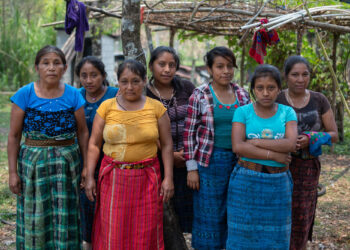While the world was busy with the pandemic, a record number of 227 land and environmental defenders were killed in 2020 — an average of four people a week, according to a new report by the NGO Global Witness. As it so often happens, these attacks took place in a wider context that includes a range of threats against defenders, arrests, smear campaigns, and other violent attacks.

The report defines land and environmental defenders as people who carry out peaceful actions against unjust, discriminatory, corrupt, or damaging exploitation of natural resources or the environment. This covers a broad range of people, such as those whose land is threatened by deforestation and mining.
Since 2012, Global Witness has been gathering data on killings of defenders. In that time, a grim picture has been identified by the authors – as the climate crisis intensifies, violence against those protecting the planet also increases. Now, the new report shows the highest ever number of activists killed for the second year in a row.
“One day, we hope to report an end to the violence against those defending our planet and their land, but until governments get serious about protecting defenders, and companies start putting people and planet before profit, both climate breakdown and the killings will continue,” Chris Madden, campaigner at Global Witness, said in a statement.
Deadly statistics
Once again, Colombia was the country with the highest recorded attacks, with 65 defenders killed in 2020. A third of these attacks targeted indigenous and afro-descendant people, and almost half were against small-scale farmers. Nicaragua saw 12 killings, making it the most dangerous country per capita for defenders last year.
Almost 3 in 4 of the attacks recorded took place in the Americas – with 7 out of the 10. highest countries located in Latin America, a visible trend over the years. The Amazon region was a dangerous hotspot, with most deaths in Peru and Brazil happening there. The report registered 18 killings across African countries in 2020, compared to seven in 2019.
Over a third of the attacks were reportedly linked to resource exploitation, such as logging and agribusiness developments, as well as to hydroelectric dams and other infrastructure. However, this figure is likely to be higher as the reasons behind these attacks are often not properly investigated nor reported on. Logging was the deadliest activity, linked to 23 deaths.
The disproportionate number of attacks against indigenous peoples continued last year, with over a third of all fatal attacks targeting them. These were documented across Mexico, Central and South America, and the Philippines. Indigenous peoples were the target of 5 out of the 7 mass killings recorded in 2020, especially in the Philippines.
Global Witness called the United Nations through its member states to ensure that the commitments and actions to implement the Paris Agreement on climate change also integrate human rights protections, to ensure that those protecting the environment are protected. Governments should also ensure national policies protect activists, as well as making sure that justice investigates and prosecutes all relevant actors. But whether or not this will happen is unclear.
Solutions can also come from the business sector, the report argued, calling on companies to ensure that they aren’t causing, contributing or benefiting from these attacks. In particular, they must publish and implement due diligence systems and adopt and implement a zero-tolerance stance on attacks against activists across the world.
The full report can be accessed here.



